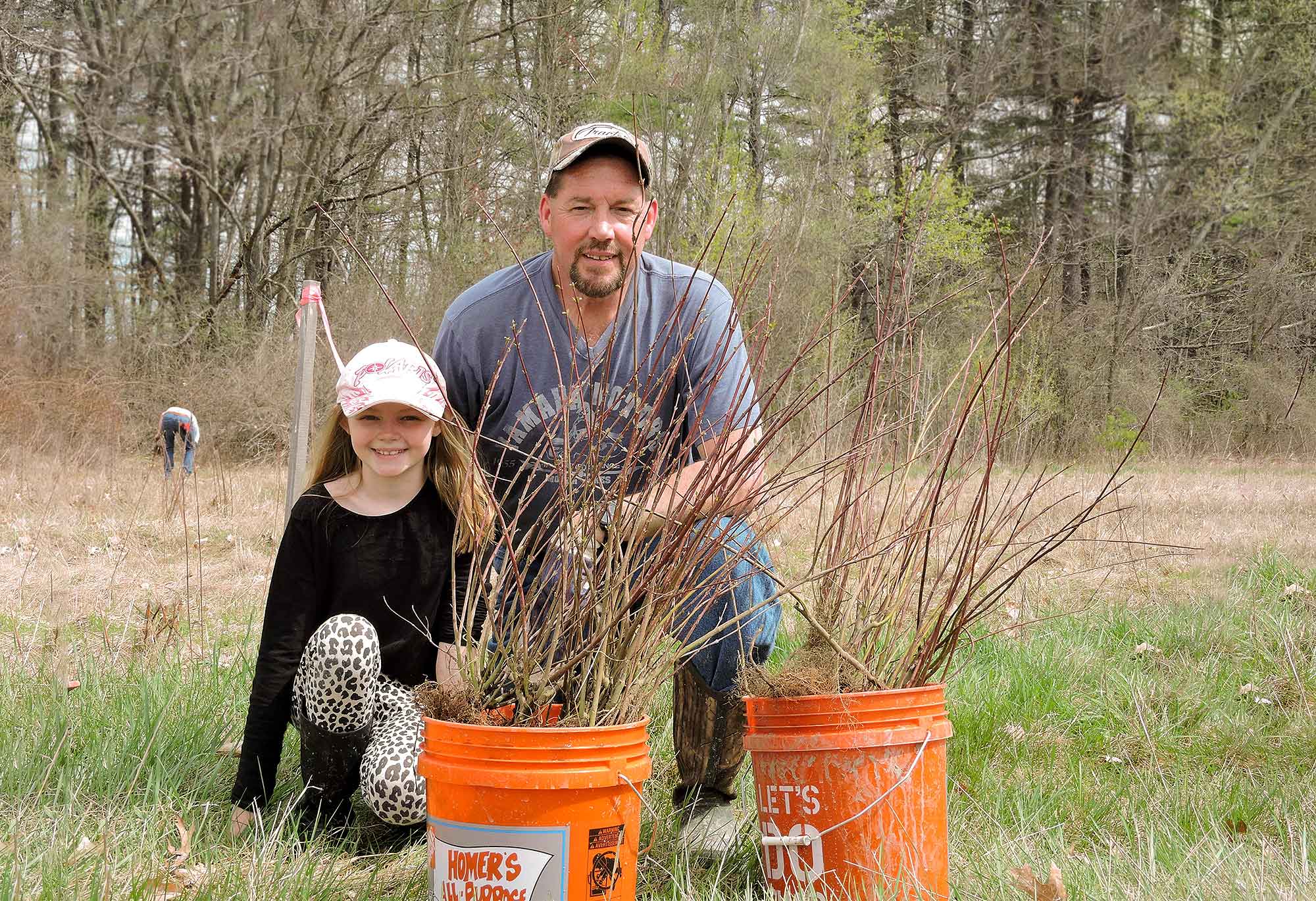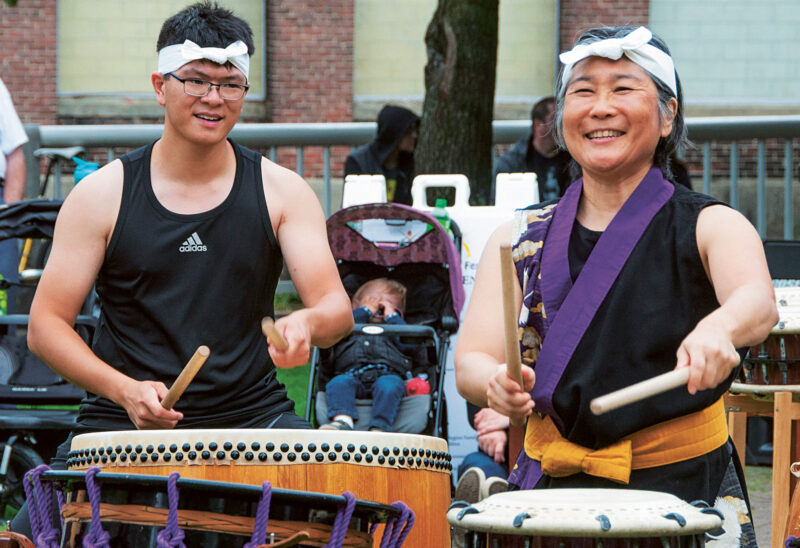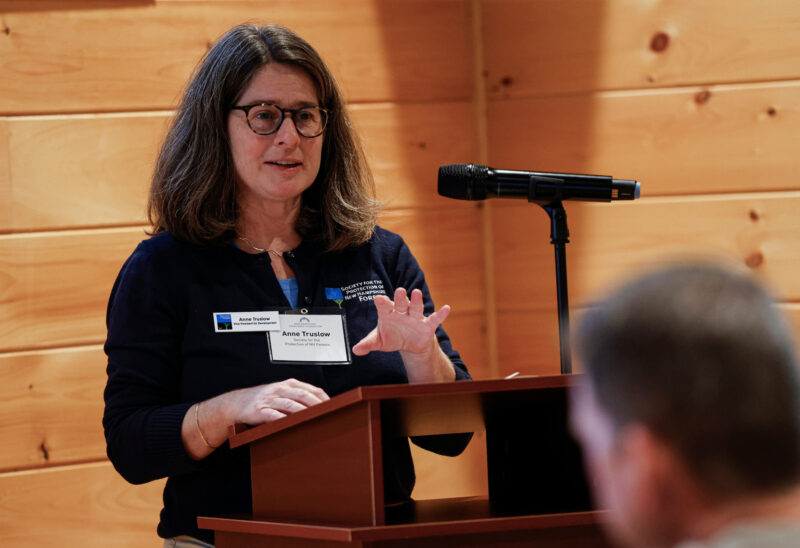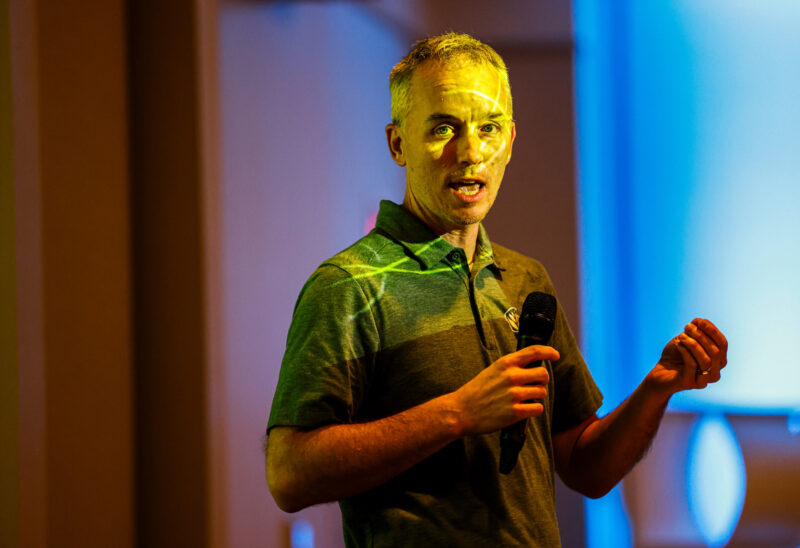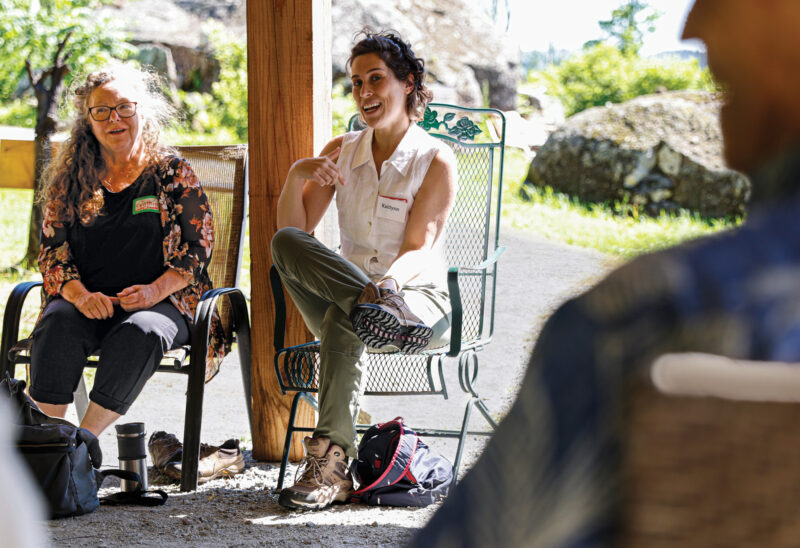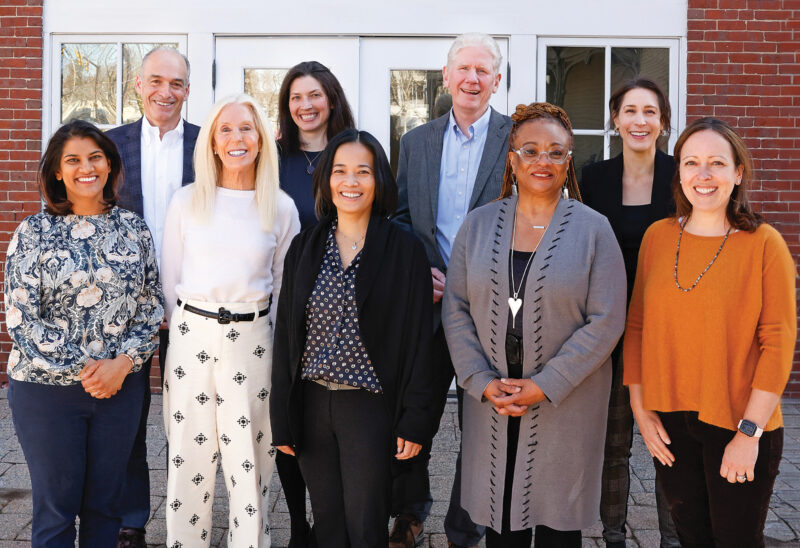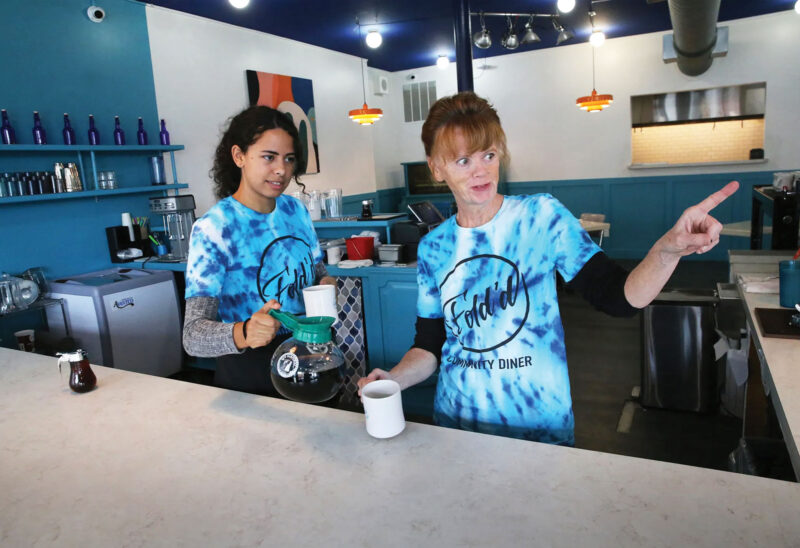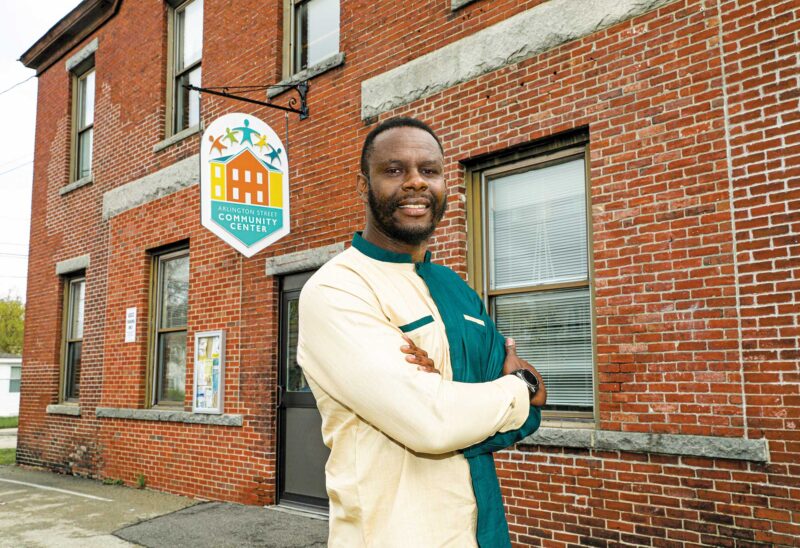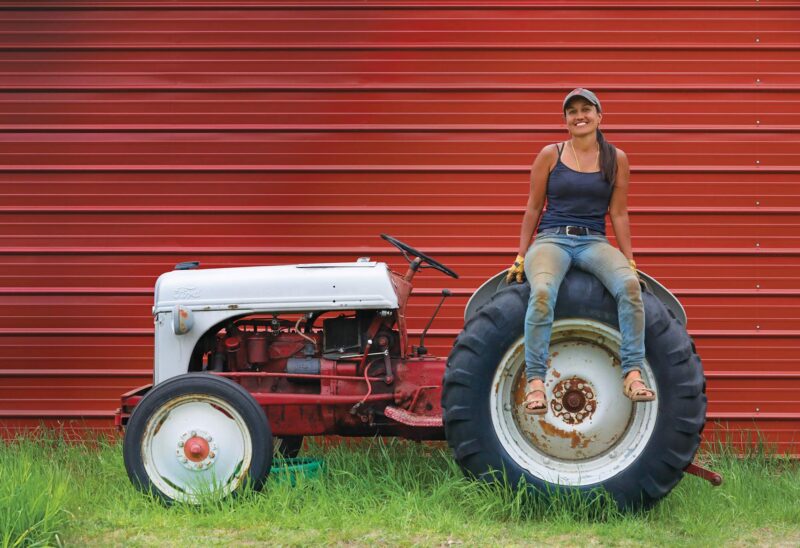Sweating under his baseball cap on a fine, hot spring morning, Mike Alukonis twists a hole-digger into an overgrown field at the Bellamy River Wildlife Management Area in Dover. His daughter Ashley kneels and gently pushes the root of a young shrub into the hole and tamps the soil around it.
This is one of 30,000 shrubs—silky dogwood, Virginia rose, and chokeberry—that will create a new habitat for the New England cottontail rabbit. New England cottontails, the only rabbit native to New Hampshire, are on the state’s endangered species list.
On this day, a dozen volunteers from New Hampshire and beyond are creating a 200-acre thicket to give the New England cottontail safe harbor to forage and thrive.
The New Hampshire Department of Fish and Game is running the event, but much of the labor has come from the Stewardship Network: New England, a new initiative that the Charitable Foundation has helped to get off the ground in New Hampshire.
Richard Cook, the Fish and Game representative in charge, looks out on the volunteers stooping, digging, and planting (and swatting away black flies) with deep appreciation: “The Stewardship Network arranged all of this,” Cook says. “It’s a great asset for us.”
The Stewardship Network, initially developed in Michigan and brought to New Hampshire by Malin Clyde at the University of New Hampshire Cooperative Extension, is a one-stop online shop for volunteers and environmental organizations seeking to connect. The Network links groups that need help with people who want to help. So far, it has listed nearly 700 events by 170 groups and signed up more than 2,000 volunteers.
The Network’s calendar for the next couple of months shows dozens of volunteer opportunities, from sand dune restoration along the Atlantic shore to a clean-up at Londonderry-Bockes Memorial Forest, to water quality monitoring in Keene, and a “BioBlitz,” or identification and inventory of natural resources, at the Lyme Hill Conservation Area.
Clyde is pleased with how the Network has grown since it started in 2013.
“There’s so much activity in there now…it feels like the table is set,” she says. “There are hundreds of ways to help restore the environment.”
The Foundation has been with the Stewardship Network since the beginning, providing a modest grant for initial research and a subsequent two-year, $50,000 grant to the Cooperative Extension that provided the momentum to turn the Network from simply a hub for volunteers into a pool of trained stewards with knowledge and skills to make their work even more productive. The grant funded the production of training guides and videos, as well as wider outreach with a weekly e-bulletin and more vibrant social media.
“The training materials have helped us create a culture of citizen science and environmental stewardship,” says Clyde, citing “stewardship” as not only wanting to help but knowing how to help. “People were interested in conservation but they had no professional background. The Foundation allowed us to think through a very concrete addition to next steps with these training guides.”
For example, people leading nature walks need a working knowledge of the landscape’s flora and fauna. Repairing trails takes expertise to determine if a trail is safe, to properly prune trees and bushes to keep trails clear, and to determine the appropriate order of work (like where clearing should start in terms of water drainage). Monitoring a conservation easement requires skills like reading topographic and surveyors’ maps and recording environmental changes and damage. Teams taking on acres of invasive plants need to be certain what the invasives look like.
The new training guides can be downloaded from the Network website (so far, they have been accessed more than 500 times in 22 states plus Canada, Singapore, and India). Guides cover areas like “How to Lead a Nature Walk,” “How to Monitor Conservation Easements,” “Outdoor Skills for Conservation Volunteers,” and “Trail Maintenance for Volunteers.”
The guides are being used by environmental groups, government agencies (“including many conservation commissions,” Clyde notes), and individual citizens eager to “up” their skills to use in their back yards, communities, and wherever events on the Stewardship Network calendar may lead them.
The trained volunteers the Network provides have been a boost to many environmental organizations.
“The Network was a perfect opportunity to build capacity within and among organizations and it’s been successful beyond my wildest hopes,” says Kevin Peterson, a senior program officer who oversees the Foundation’s environmental grantmaking.
Informed by both business sense and the best practices of community service, the Network is electrified by pure human energy. “Malin Clyde is a firecracker,” says Peterson. “She has endless enthusiasm and it’s infectious. She’s positive and knows how to bring people in. It’s a major factor to their success.”
The rabbit habitat workers were proof of the Network’s success at reaching people with different interests, ages, and experience.
For Chris and Mike Byrne, teen brothers from Londonderry, this was a first volunteer experience. Their dad, Jim, had several similar projects under his belt, and hoped this event might introduce his sons to a lifetime environmental commitment.
Millennials Marissa Boire of Manchester (a first-time volunteer) and Craig Bowman (a UNH wildlife major with lots of volunteer experience) of Milton were both there for their love of the natural world. State senator David Watters of Dover was working on thicket-building alongside New Hampshire neighbors.
Retiree Mike Iavone of Center Barnstead is a veteran volunteer with the callouses to prove it, while Adela Chovancova and her toddler daughter Madeleine of Massachusetts were starting a two-generation tradition of volunteerism.
“I just want to give back,” said Alukonis, an avid hunter and fisherman who has enjoyed New Hampshire’s bounty since he was a boy and has a deep sense of duty toward its natural resources.
That spirit has motivated people to travel hundreds of miles and spend thousands of hours cleaning up hiking trails, watching over seacoast marshes, and planting safe thickets where rabbits can run.
Explore volunteer opportunities at newengland.stewardshipnetwork.org.

